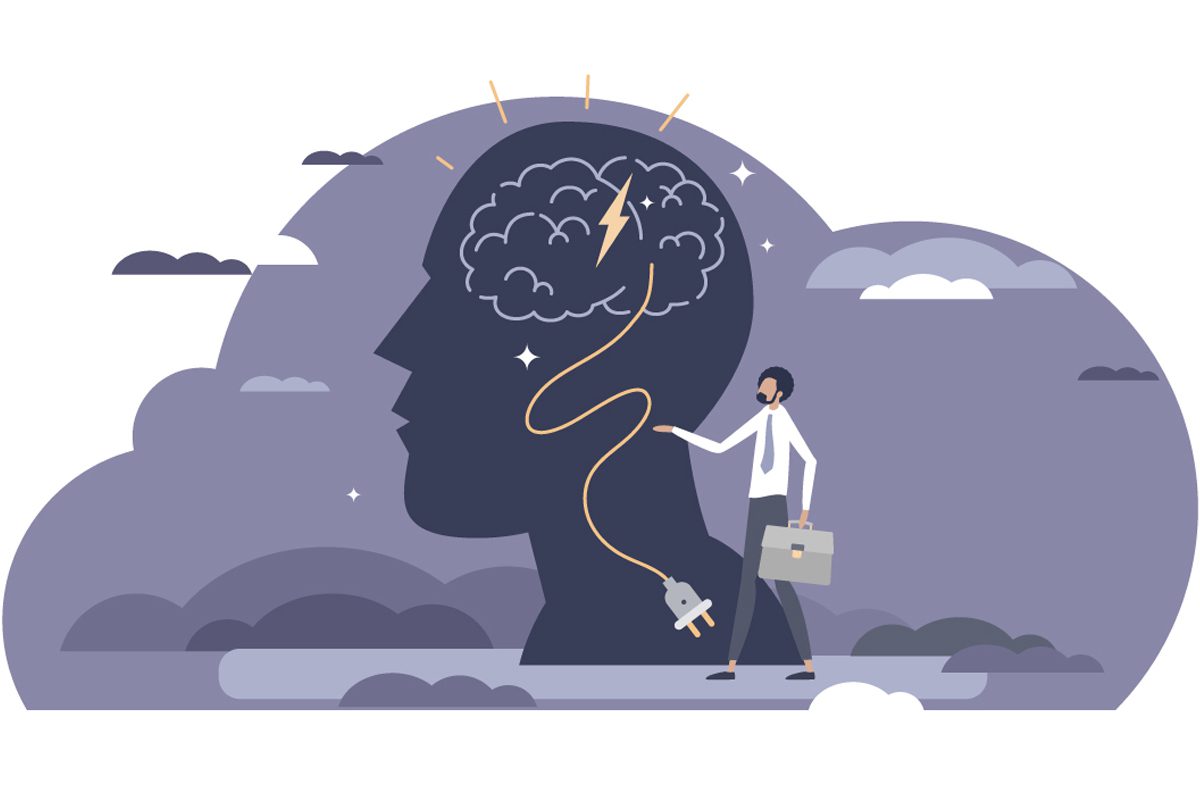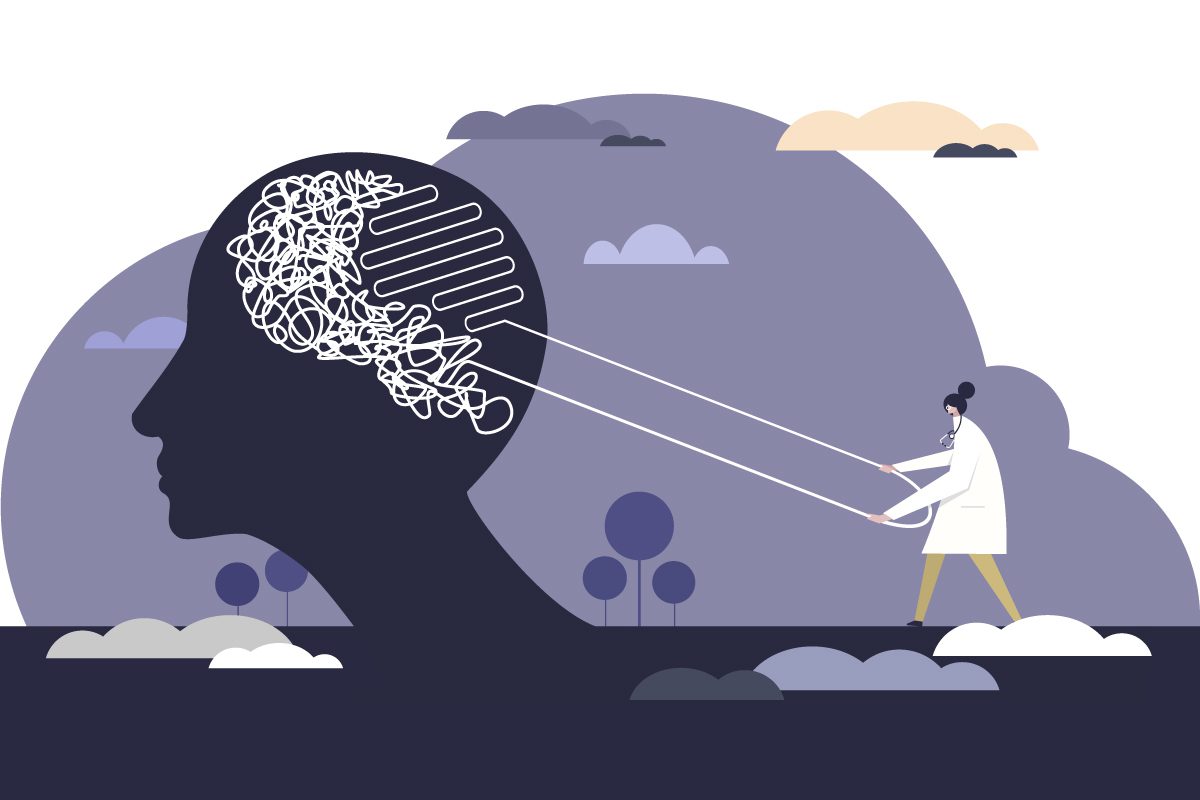aDivision of Schizophrenia and Related Disorders, Department of Psychiatry and Behavioral Sciences, The University of Texas Health Science Center at San Antonio, San Antonio, Texas
bUniversity of California San Diego and VA San Diego Healthcare System, San Diego, California
J Clin Psychiatry 2023;84(1):MS21078COM7
To cite: Velligan DI, Rao S. Schizophrenia: salient symptoms and pathophysiology. J Clin Psychiatry. 2023;84(1):MS21078COM7.
To share: https://doi.org/10.4088/JCP.MS21078COM7.
© 2023 Physicians Postgraduate Press, Inc.
This Commentary section of The Journal of Clinical Psychiatry presents highlights of the teleconference series “Revisiting the Relapse and Remission Roller Coaster: Safety and Efficacy of Novel Schizophrenia Treatments,” which was held on September 13, 2022. This report was prepared and independently developed by the CME Institute of Physicians Postgraduate Press, Inc., and was supported by an educational grant from Alkermes, Inc. and Sunovion Pharmaceuticals, Inc.
Patients diagnosed with schizophrenia experience varying degrees of impairment including positive and negative symptoms.1 Positive symptoms, such as delusions and auditory hallucinations, describe phenomena that are inappropriately present. In contrast, negative symptoms are defined by the reduction or complete absence of ordinary behaviors. These features, namely anhedonia, asociality, avolition, alogia, and a blunted affect, often precede the manifestation of positive symptoms and have a higher associated burden of illness. Existing pharmacotherapies, namely dopamine D2 partial agonists and antagonists, can treat delusions effectively but do not ameliorate the behavioral deficits seen in schizophrenia.2 Despite their potential for significant morbidity, negative symptoms are comparatively underrecognized in clinical practice, and psychiatrists face substantial challenges identifying and treating these aspects of the disease.2,3
Although positive symptoms often take clinical precedence, their less obvious counterparts warrant consideration and careful assessment. Approximately 40% of patients with schizophrenia exhibit negative symptoms, and their duration and severity are strong predictors of worse occupational and academic performance.4 Questions designed to elicit broad responses are ideal during patient meetings, as clinicians can determine whether patients are capable of elaborating on responses without prompting. To facilitate screening, psychiatrists may also want to adopt tools such as the 4-Item Negative Symptom Assessment,5 whose brevity and easy-to-use design make use easier in busier practices. Additional input from informants may critically supplement insights gleaned from interactions with patients, who may possess limited self-awareness regarding the extent and presence of negative symptoms.
Because negative symptoms currently lack effective pharmacotherapies, psychiatrists must implement alternative care strategies to address patients’ greatest unmet needs.6 Findings from select studies support the use of cognitive behavioral therapy (CBT) to alleviate negative symptoms,7,8 but investigators performing a systematic review uncovered no evidence suggesting that this approach is more effective than other talking therapies.9 To fortify possible gains made with CBT, it is essential to communicate the importance of adopting healthy lifestyle choices and encourage enrollment in social skills training programs and cognitive remediation therapy.10
Available evidence suggests that numerous abnormalities in neurotransmission underlie the diverse, disruptive behaviors and cognitive deficits characteristic of schizophrenia. To date, researchers have implicated a minimum of 4 dopaminergic pathways. Excess dopamine in the mesolimbic pathway, extending from the ventral tegmental area to limbic areas, may drive positive symptoms of schizophrenia. Elsewhere, in the mesocortical pathway linking the ventral tegmental area and the cortex, lower levels of dopamine may account for negative symptoms and cognitive impairment. Such findings, among others, support the notion that the positive and negative symptoms in schizophrenia have distinct pathophysiologic bases.11
Additional evidence implicates the excitatory neurotransmitter glutamate in the pathogenesis of schizophrenia. Using preclinical models, researchers have noted that the administration of N-methyl-d-aspartate (NMDA) receptor antagonists, such as phencyclidine and ketamine, induces schizophrenia-like symptoms.12 Mechanistically, a blockade of NMDA receptors results in a counterintuitive increase in glutamate release, along with reductions in the firing rate of interneurons. These reductions, in turn, result in disinhibition of pyramidal neurons and disruptions to normal, synchronized oscillations between excitatory and inhibitory neurons.13 These neural pathways are associated with a wide range of cognitive processes, such as working memory.14 Investigators who have conducted postmortem studies have also observed altered levels of cortical and subcortical glutamate across brain regions relevant to reward processing.13
Finally, it is worth noting that the dopamine and glutamate hypotheses of schizophrenia are not mutually exclusive. Hypofunctional NMDA receptors and an associated loss of glutamatergic projections from prefrontal cortex to midbrain dopaminergic neurons lead to decreased mesocortical dopamine and increased mesolimbic dopamine. In people with schizophrenia, decreased functioning of GABAergic interneurons leads to enhanced inhibitory signaling onto the ventral pallidum, reduced inhibition of the ventral tegmental area, and ultimately increased dopamine release.13
Larger scale physical changes are also observable in brain scans of patients with schizophrenia. Relative to most individuals, those with schizophrenia have enlarged lateral ventricles and a bigger third ventricle. Data from previous research also suggest that individuals at high risk of a schizophrenia episode additionally have a smaller medial temporal lobe.11
Ultimately, by better understanding the changes in brain structure that lead to this disabling disorder, researchers can develop the next generation of therapies that can address the unmet needs experienced by individuals with schizophrenia. Negative symptoms, while harder to detect, detract significantly from patient-related quality of life and must be addressed more effectively by clinicians aiming to help patients achieve recovery.2
 Patient PERSPECTIVE
Patient PERSPECTIVE
“I was diagnosed as schizophrenic when I was 13 years old. I spent the better part of my adolescence and young adulthood in hospitals…I fought my disease and the stigma of mental illness in my struggle for employment. I learned from my mistakes, which cost me several jobs, and along with my psychiatrist, we experimented with different medications. Fortunately, we found a combination of medications which kept me out of hospitals, and I kept employment.”15
Published online: January 18, 2023.
Relevant financial relationships: Dr Velligan has served as a consultant for Merck, Alkermes, Otsuka, and Janssen; received grant/research support from Biogen; received honoraria from Janssen and Otsuka; and served on the advisory boards for Merck, Janssen, Otsuka, and Alkermes. Dr Rao has served as a consultant for Janssen and Alkermes and received honoraria from Janssen, Alkermes, Otsuka, and Neurocrine.
Funding/support: Financial support for preparation and dissemination of this commentary was provided by Alkermes, Inc. and Sunovion Pharmaceuticals, Inc.
Disclaimer: This evidence-based peer-reviewed commentary was prepared by the CME Institute. The opinions expressed herein are those of the faculty and do not necessarily reflect the views of the CME Institute, the publisher, or the commercial supporters. This article is distributed by Alkermes, Inc. and Sunovion Pharmaceuticals, Inc., for educational purposes only.
You may also be interested in these CME Institute activities




References (15)

- Schultz SH, North SW, Shields CG. Schizophrenia: a review. Am Fam Physician. 2007;75(12):1821–1829. PubMed
- Correll CU, Schooler NR. Negative symptoms in schizophrenia: a review and clinical guide for recognition, assessment and treatment. Neuropsychiatr Dis Treat. 2020;16:519–534. PubMed CrossRef
- Galderisi S, Mucci A, Buchanan RW, et al. Negative symptoms of schizophrenia: new developments and unanswered research questions. Lancet Psychiatry. 2018;5(8):664–677. PubMed CrossRef
- Carbon M, Correll CU. Thinking and acting beyond the positive: the role of the cognitive and negative symptoms in schizophrenia. CNS Spectr. 2014;19(suppl 1):35–53 PubMed CrossRef
- Alphs L, Morlock R, Coon C, et al. The 4-item Negative Symptom Assessment (NSA-4) instrument: a simple tool for evaluating negative symptoms in schizophrenia following brief training. Psychiatry (Edgmont). 2010;7(7):26–32. PubMed
- Okada H, Hirano D, Taniguchi T. Impact of negative symptom domains and other clinical characteristics on functional outcomes in patients with schizophrenia. Schizophr Res Treatment. 2021:8864352. PubMed CrossRef
- Elis O, Caponigro JM, Kring AM. Psychosocial treatments for negative symptoms in schizophrenia: current practices and future directions. Clin Psychol Rev. 2013;33(8):914–928. PubMed CrossRef
- Jauhar S, McKenna PJ, Radua J, et al. Cognitive-behavioural therapy for the symptoms of schizophrenia: systematic review and meta-analysis with examination of potential bias. Br J Psychiatry. 2014;204(1):20–29. PubMed CrossRef
- Guaiana G, Abbatecola M, Aali G, et al. Cognitive behavioural therapy (group) for schizophrenia. Cochrane Database Syst Rev. 2022;7(7):CD009608. PubMed
- Wykes T, Huddy V, Cellard C, et al. A meta-analysis of cognitive remediation for schizophrenia: methodology and effect sizes. Am J Psychiatry. 2011;168(5):472–485. PubMed CrossRef
- Patel KR, Cherian J, Gohil K, et al. Schizophrenia: overview and treatment options. P&T. 2014;39(9):638–645. PubMed
- Jentsch JD, Roth RH. The neuropsychopharmacology of phencyclidine: from NMDA receptor hypofunction to the dopamine hypothesis of schizophrenia. Neuropsychopharmacology. 1999;20(3):201–225. PubMed CrossRef
- Robison AJ, Thakkar KN, Diwadkar VA. Cognition and reward circuits in schizophrenia: synergistic, not separate. Biol Psychiatry. 2020;87(3):204–214. PubMed CrossRef
- McCutcheon RA, Krystal JH, Howes OD. Dopamine and glutamate in schizophrenia: biology, symptoms and treatment. World Psychiatry. 2020;19(1):15–33. PubMed CrossRef
- Schizophrenia and Related Disorders Alliance of America. Member Stories. Published 2018. Accessed February 27, 2018. https://sardaa.org/schizophrenia-alliance/member-stories/
Save
Cite
Advertisement
GAM ID: sidebar-top




